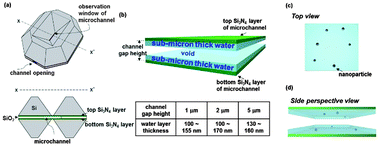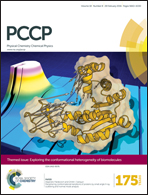Stable water layers on solid surfaces†
Abstract
Liquid layers adhered to solid surfaces and that are in equilibrium with the vapor phase are common in printing, coating, and washing processes as well as in alveoli in lungs and in stomata in leaves. For such a liquid layer in equilibrium with the vapor it faces, it has been generally believed that, aside from liquid lumps, only a very thin layer of the liquid, i.e., with a thickness of only a few nanometers, is held onto the surface of the solid, and that this adhesion is due to van der Waals forces. A similar layer of water can remain on the surface of a wall of a microchannel after evaporation of bulk water creates a void in the channel, but the thickness of such a water layer has not yet been well characterized. Herein we showed such a water layer adhered to a microchannel wall to be 100 to 170 nm thick and stable against surface tension. The water layer thickness was measured using electron energy loss spectroscopy (EELS), and the water layer structure was characterized by using a quantitative nanoparticle counting technique. This thickness was found for channel gap heights ranging from 1 to 5 μm. Once formed, the water layers in the microchannel, when sealed, were stable for at least one week without any special care. Our results indicate that the water layer forms naturally and is closely associated only with the surface to which it adheres. Our study of naturally formed, stable water layers may shed light on topics from gas exchange in alveoli in biology to the post-wet-process control in the semiconductor industry. We anticipate our report to be a starting point for more detailed research and understanding of the microfluidics, mechanisms and applications of gas–liquid–solid systems.


 Please wait while we load your content...
Please wait while we load your content...